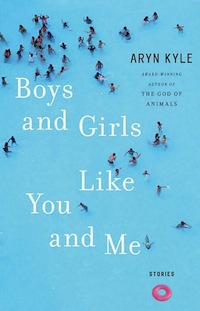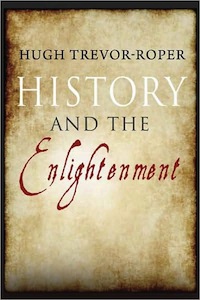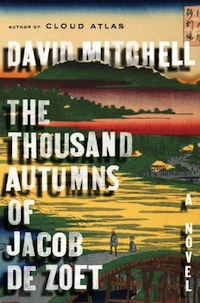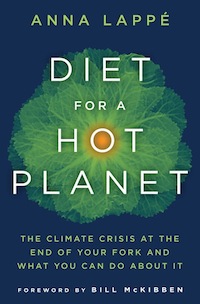Lazy, Hazy Summer Days

Not being a statistician, I am not offering this as a fact, but my sense is that there are more short story collections being published than ever.
And given the distortions of time that obtain in our enveloping warp-speed world, one would think that short fiction would be the preferred form for lovers of literature. Since story collections never seem to end up on bestseller lists, perhaps the book industry might take a cue from the “record” business, which has a multitude of lists for various types of music, and create a short-fiction bestseller list. I’m just saying.
Despite its title, I liked Aryn Kyle’s debut novel The God of Animals—thus her new story collection, Boys and Girls Like You and Me (Scribner), is good news. The focus seems to be on the distaff side of life (why not?). One of my favorite novelists, Sigrid Nunez (who has a new novel coming this fall), observes:
By turns mordant and tender, often comic, always precise, these beautifully written stories go to the heart of the oddity of what we call ordinary life. Kyle succeeds in telling bitter truths about her characters—both the sinning and the sinned against—without succumbing to bitterness herself. Hope and affection for our sad bruised world shine through.
You are more likely to hear of Evgenia Citkowitz based on her movie work—a screenplay based on Elizabeth Bowen’s The House in Paris is in development (meaning also that you may never hear of it)—or because she is married to actor Julian Sands, but her literary debut, Ether: Seven Stories and a Novella, warrants serious attention. Joyce Carol Oates effuses:
How coolly poised, Evgenia Ciktowitz’s prose! And how elegantly and richly detailed her fictional worlds! It’s something of a shock then to realize that in this debut collection the young author is depicting individuals devastated by emotion, if not decorticated, numbed… Sharply observed, resolutely unsentimental, and wholly engaging.
Laura van den Berg’sWhat the World Will Look Like When All the Water Leaves Us (Dzanc Books) was published in November 2009 (which is, as you know, a long, long time ago in the culture business), but happily it’s in the news as a finalist in the prestigious (meaning this is not some publicity fabrication) Frank O’Connor Short Fiction Award. Which gives you another chance to pick up and read this worthy tome.
* * *

As I have long argued that U.S. history is badly taught in the United States (and forget about world history), offering for consideration Hugh Trevor-Roper’s History and the Enlightenment (Yale University Press) may be an occasion of throwing pearls before swine. But as I am not a cynic and believe there is a small beacon called hope in the gathering darkness, let me offer for your consideration this collection of essays by the late Trevor-Roper (1914 – 2003).
As Regius Professor of History at Oxford he was known for his books The Last Days of Hitler and Hermit of Peking, and unfortunately for his momentary authentication of the Hitler Diaries via the bullying of Rupert Murdoch. Still, he was considered one of the great historians of his generation. Editor John Robertson has collected various of Trevor-Roper’s reflections on historiography and his assessments of an array of 18th- and early 19th-century historians, some well known, others not.
Michael Dirda concludes:
History and the EnlightenmentOttoman History
* * *
The designation “graphic novel” originally invited controversy as it was a rubric lacking in, among other things, precision. Setting aside for the moment (or forever) such critical squabbles, illustrator Daniel Clowes (Art School Confidential and Ghost World, both of which became movies) is undeniably a wonderful storyteller, and his newest creation, Wilson (Drawn & Quarterly), is most assuredly a compelling narrative. If the graphic novel means anything, Clowes’s new opus would seem to qualify.

As one review points out:
Wilson
Writer Fred Van Lente and illustrator Ryan Dunlavey collaborated on an award-winning, best-selling comic book series entitled Action Philosophers, which they have now anthologized under a single cover with the same name (Evil Twin Comics). The nine issues included Plato as a wrestling superstar, Nietzsche as, you guessed it, Superman, and Buddha as a kung fu master, and they cover the history of philosophy up to Jacques Derrida with four stories not previously published.
Better than Cliff notes or Philosophy for Dummies, you betchum.
* * *
R.I.P., Harvey Pekar.
* * *

When I spoke with David Mitchell last week—a chat, barring unforeseen natural disasters, should appear here at TMN soon, soon, soon—we recalled that we began our never-ending conversation in the 2000 with the publication of his first novel Ghostwritten. (The tape of that talk I leave for my literary executor to unearth.) Ten years and four novels later, Mitchell has, among other dubious honors, been named by Time magazine as one of the most influential novelists in the world and by the New York Times as a “genius.” Whoopee!
His new novel, The Thousand Autumns of Jacob de Zoet (Random House), differs from his other works, as is his habit. Set in Nagasaki Harbor in 1799, Dejima is the “high-walled, fan-shaped artificial island” which served as the only interface between the Japanese empire and the rest of the world. In inviting prose, Mitchell details the intersection of the lives of Dutch clerk Jacob de Zoet and the disfigured daughter of a samurai doctor Orito Aibagawa against a background of European imperialism, greed, and the activities of a lethal Japanese cult.
While I don’t quite see Mitchell’s novel as Eric Banks does, he took better notes than I did (OK, I didn’t take notes), so he is worth quoting:
When not tripping over the intricacies of its plot line, the novel features some of Mitchell’s most luscious writing yet. For all the baroque movement of the story, the language is an exercise in extravagant control. Little flashes of haiku illuminate the text (“a night-soil man’s buckets, swinging on his pole, stain the air”), and Mitchell interrupts his characters’ thoughts with his own aperçus that have the feel of tiny punches. They have a cumulative effect. Walking through Dejima, De Zoet “smells steamed rice, sewage, incense, lemons, sawdust, yeast and rotting seaweed.” In one beautiful passage, Mitchell laconically notes: “The incandescent sun is caged by a glowing bay tree.” Later and more ominously we’re told that “the yeasty moon is caged in his half-Japanese, half-Dutch window.” And in a bravura moment in which Mitchell switches to first-person narration, a Sumatran slave philosophizes on what it means to have a name and on what part of himself a person can actually be said to possess. Having had everything else taken from him, the slave consoles himself with the sovereign pleasure of owning his own thoughts: “So I created a mind like an island… protected by deep blue sea. On my mind-island, there are no bad-smelling Dutchmen, or sneering Malay servants or Japanese men.” Islands—and thinking—become their own forms of defiance.
My take on Mitchell’s latest is that is as complete and satisfying a tale as I have encountered this year. Oddly, David Mitchell has hinted at a trilogy with two further books following the story of A Thousand Autumns.
We’ll see.
* * *
Irish-writer-turned-Australian-immigrant Adrian McKinty’s Fifty Grand (Black Cat) is a nifty procedural/crime story pitting a female Havana police detective against evil forces in a small town in Colorado where she believes her father was murdered. Given the unlikeliness of the circumstances, McKinty puts his good and accurate knowledge of life and love in present-day Cuba to good use, lending a plausibility that makes it both a good read and a useful précis on Cuban affairs.
Additionally, McKinty, being a funny and iconoclastic Irishman, has a website that invites attention.
* * *

An admission: for the most part, I find conversations about food uninteresting. Thus I am not inclined to pay attention to the smorgasbord of books on food that are, I would think, a source of much income for the book business. On the other hand, there are books that depart from what I see as a norm. Which is how I view Diet for A Hot Planet by Anna Lappe (Bloomsbury), which is both an intelligent call to action and an accessible primer to the relationship of food and global environmental concerns.
Alice Waters warns:
Nothing is more important than connecting the way we eat to global warming. After all, food is an everyday need for everyone. Anna Lappé shows us that eating with intention is our responsibility and our pleasure.
Eating for Beginners by Melanie Rehak (Houghton Mifflin Harcourt) also has a social agenda, which has much to do with the author’s curiosity about the current trends in food and nutrition and because of her concerns about feeding her young son:
Slate columnist Mark Schatzker’sSteak: One Man’s Search for the World’s Tastiest Piece of Beef (Viking) is pretty straightforward. He consumes more than 100 pounds of steak and journeys through four continents and eight countries.
Kim Fay sent me her book, Communion: A Culinary Journey Through Vietnam (Global Directions/Things Asian Press), which I found to be engrossing, especially since I hadn’t paid much attention to the benighted nation of Vietnam since the war years (and a recent tour via Karl Marlantes’s Matterhorn).
Gringo writer/photographer Fay, who lived in Vietnam for a number of years, chronicles a five-week eating tour through the country from Hanoi to Ho Chi Minh City (Saigon). Nice work if you can get it.
